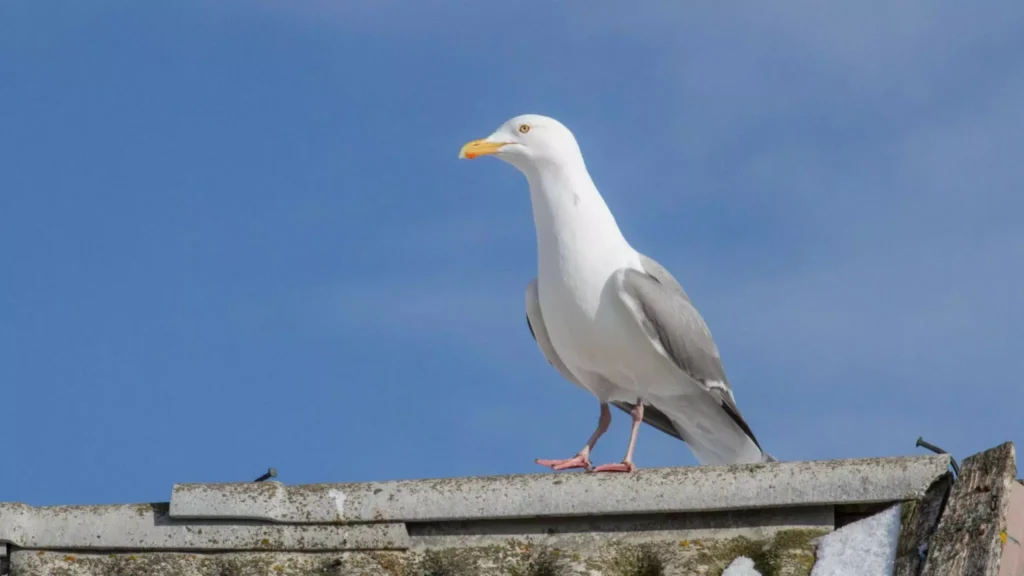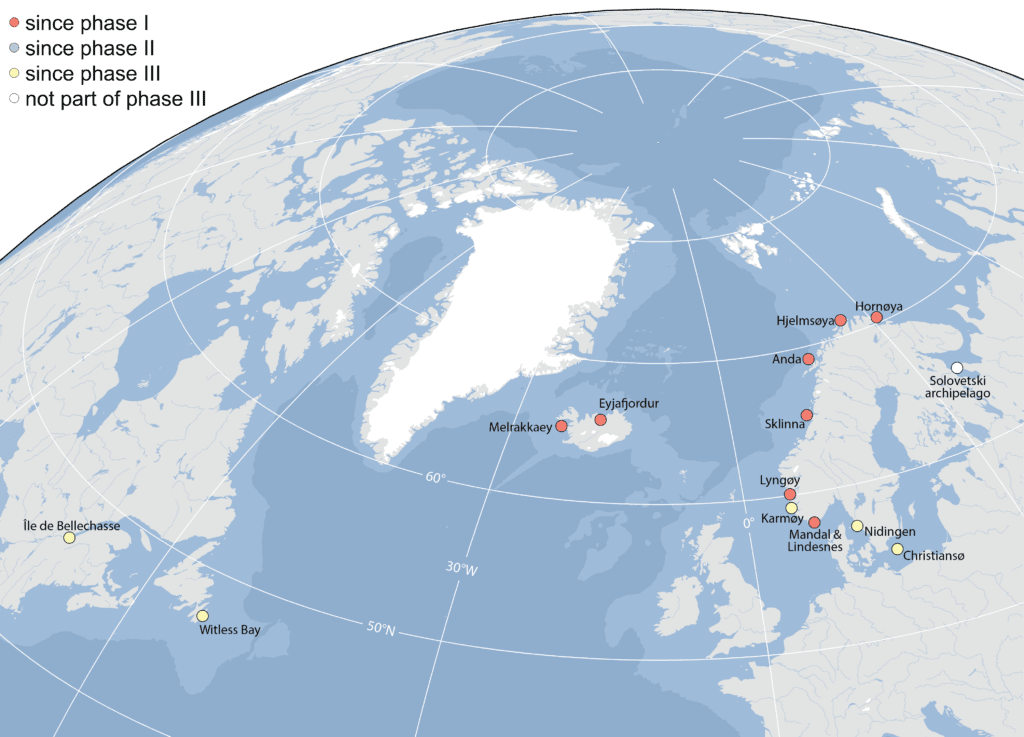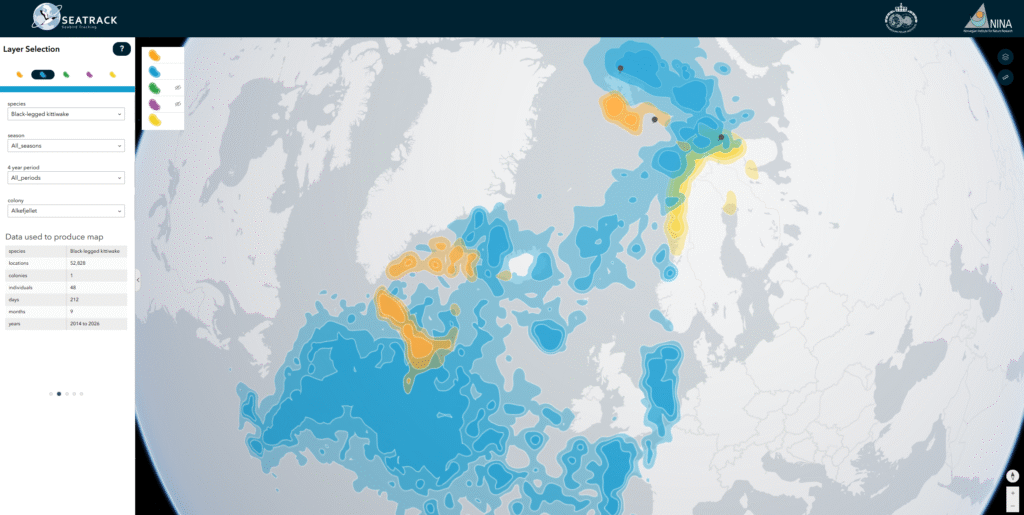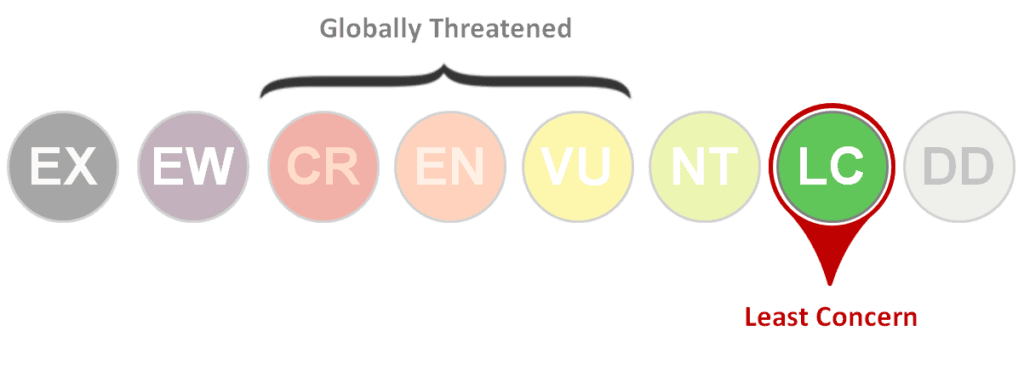Herring gulls (Larus argentatus), representing one of three coastal surface feeding species within the scope of the project, was initially instrumented with GLS loggers at 14 SEATRACK localities until 2017.
The Herring gull has been a SEATRACK species since the beginning of the programme in 2014. In 2024, herring gulls were reintroduced to SEATRACK and deployment of GLS and GPS loggers, as well as GPS-GSM transmitters, were started on this species at 14 locations.
Herring gulls are widespread and abundant around the North Atlantic and classified as being of “least concern” on IUCN 2015 red list.

Classification of Herring gull is complicated, but they are members of the Laridae family and are widespread. European herring gulls breed across Northern Europe, Western Europe, Central Europe, Eastern Europe, Scandinavia and the Baltic states. Adults in breeding plumage have a grey back and upper-wings and white head and underparts. The wingtips are black with white mirrors. The bill is yellow with a red spot, eyes are pale with orbital rings ranging from yellow to dull orange. The legs are normally pink. Non-breeding adults have brown streaks on the head and neck.

Herring gulls inhabit coastal and near-coastal areas but can forage inland on large lakes and reservoirs, fields and refuse dumps. The species is highly opportunistic, exploiting almost any available food source e.g. fish, marine and terrestrial invertebrates, carcasses, bird eggs and young, rodents, berries and tubers. They also scavenge at refuse dumps, sewage outfall zones and frequently follow fishing boats.
Featured image: Sven-Håkon Lorentsen.

View data



